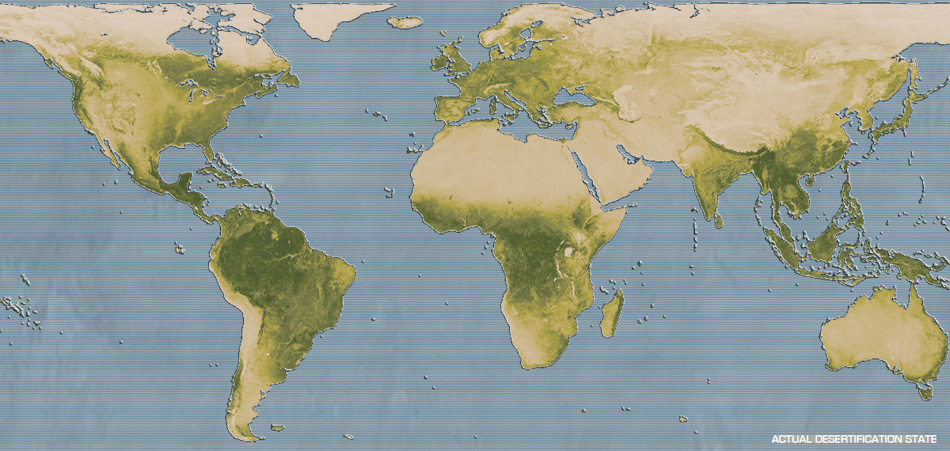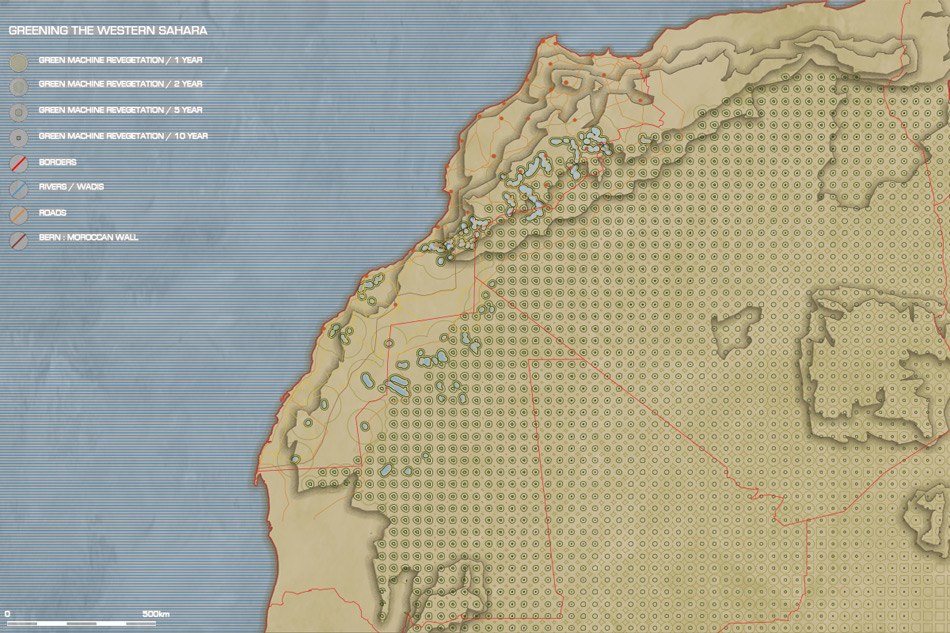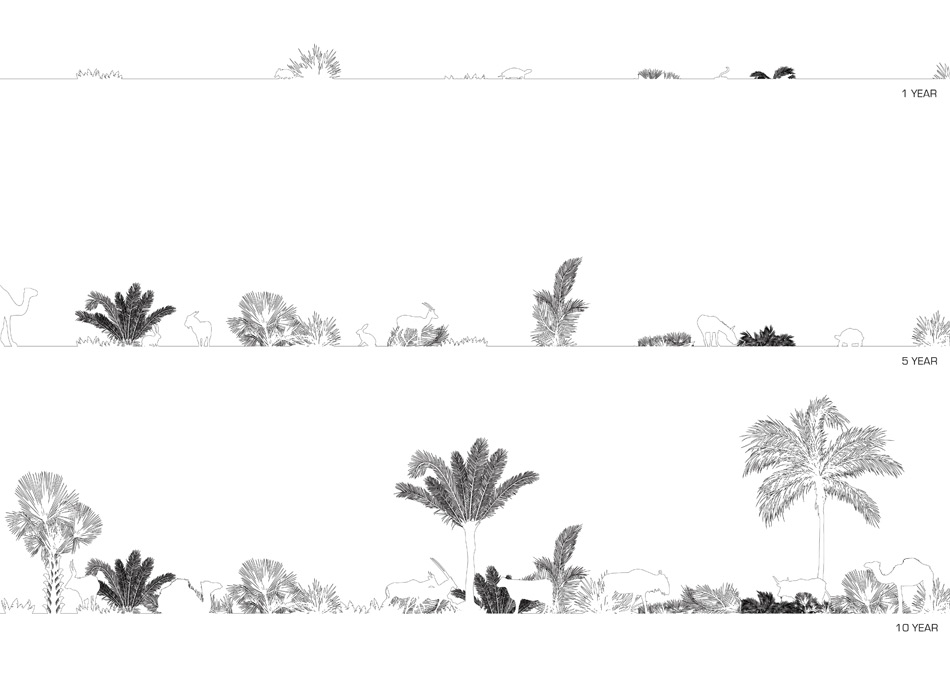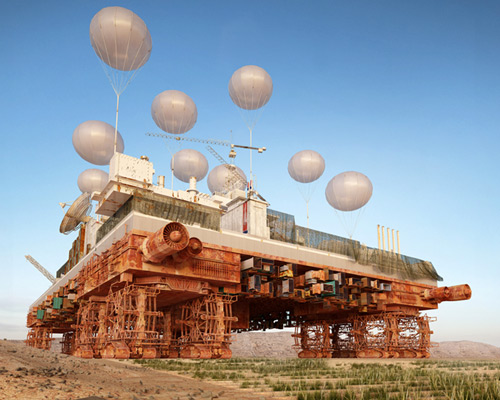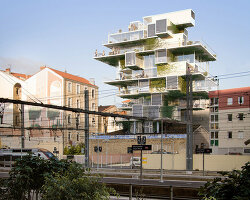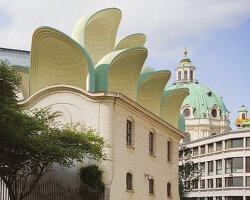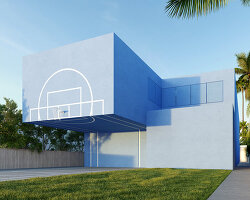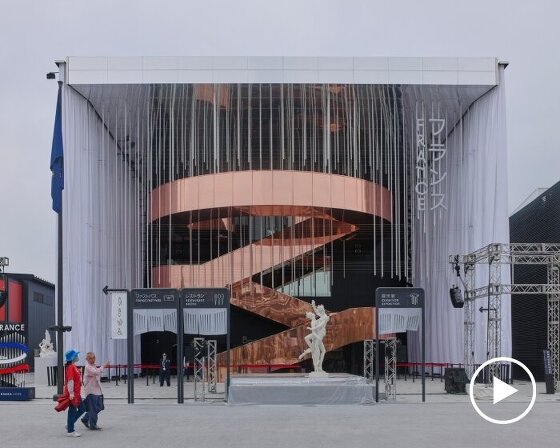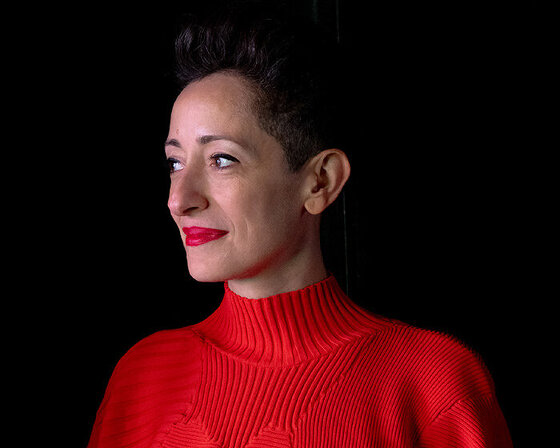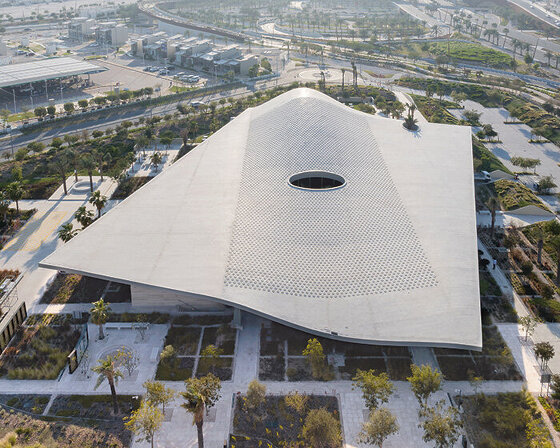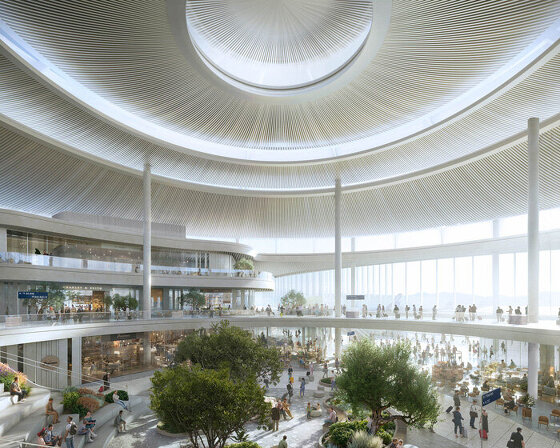the green machine by malka architecture introduces desert vegetation
images courtesy of malka architecture
interested in the purity of the desert and its untapped potential, stephane malka of malka architecture has developed ‘the green machine’, a mobile platform combined with an industrial city that regenerates dry and barren landscapes. covering much of the globe’s surface, the rapid and ongoing desertification leads to economic and social instability. consequently, malka’s proposal fertilizes dry ground and supplements local populations with food and water.
working alongside yachar bouhaya architecte, the concept looks to exploit the sahara’s rich resources and possibilities, with a design capable of producing 20 million tons of crops each year. the structure also forms a mobile city, accommodating a range of housing, schools, community restaurants, and places of recreation.

the scheme combines a mobile plantation platform with an industrial city
with its giant caterpillar treads – originally designed to transport NASA rockets – the machine can be driven over a range of undulating terrains. the versatile oasis takes advantage of the region’s hostile sun and wind through a series of inventive systems. completely self-sufficient, the structure generates its own electricity through nine solar towers, which produce 450kw each day.
nine balloons are floated above the traveling city, capable of obtaining water from the air via condensation. the same balloons are also equipped with turbines, which generate renewable energy. additionally, stack effect is employed for producing electricity. the temperature differential within greenhouses positioned at the base of the tower creates a depression at the level of its summit. the hot air at ground level rises through chimney, generating a constant flow of power while the sun is out.
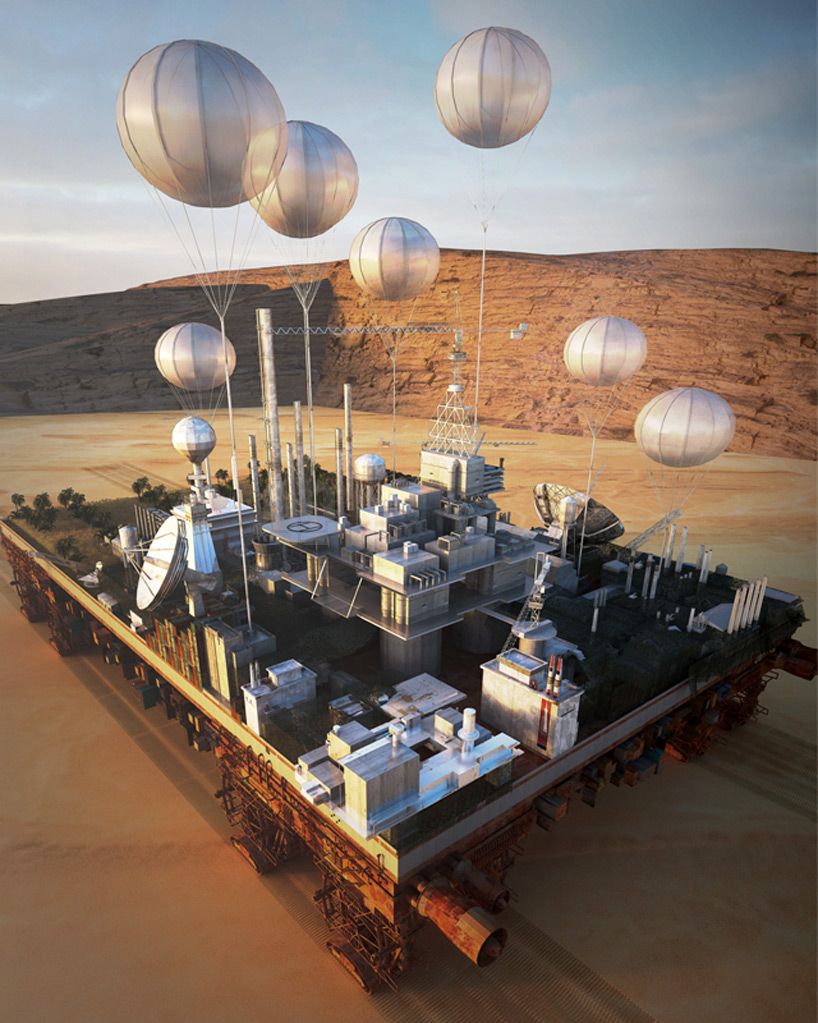
nine balloons are floated above the traveling city, capable of obtaining water from the air
the sixteen caterpillars revitalize the ground through a simple process. the first pairs of treads plow the land, pouring water to move and soften the earth’s surface. the rear treads then inject a second mixture of water, natural fertilizer and cereal seeds. after one year, fallow ground is colonized by seasonal plants, insects and small animals. five years later, some shrubs with short growth span begin to appear, while termites’ nests and burrows dug by rodents start to materialize. wildlife is vastly increased after ten years of plantation, with long lasting vegetation and trees establishing themselves as part of the landscape. finally, larger animals start to occupy the site permanently – herbivores, as well as their predators.
the scheme intends to stimulate debate concerning global warming, overpopulation and food shortage, encouraging immediate solutions to a large scale problem that affects so many of the world’s occupants.
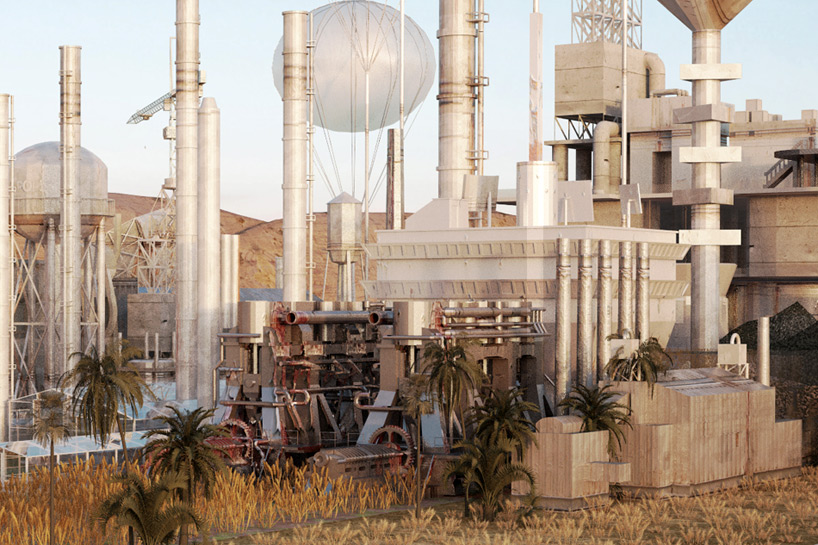
the proposal fertilizes dry ground and supplements local populations with food and water

the concept looks to exploit the sahara desert’s resources and possibilities
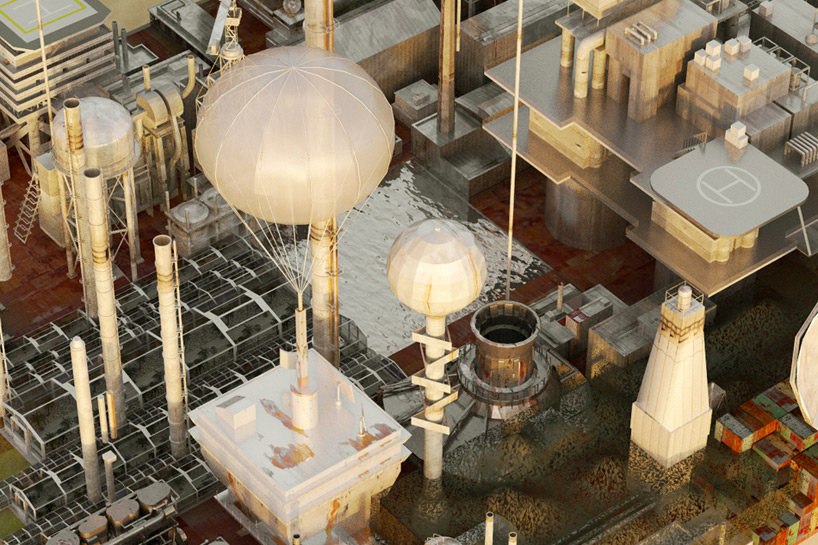
the structure accommodates housing, schools, community restaurants, and places of recreation
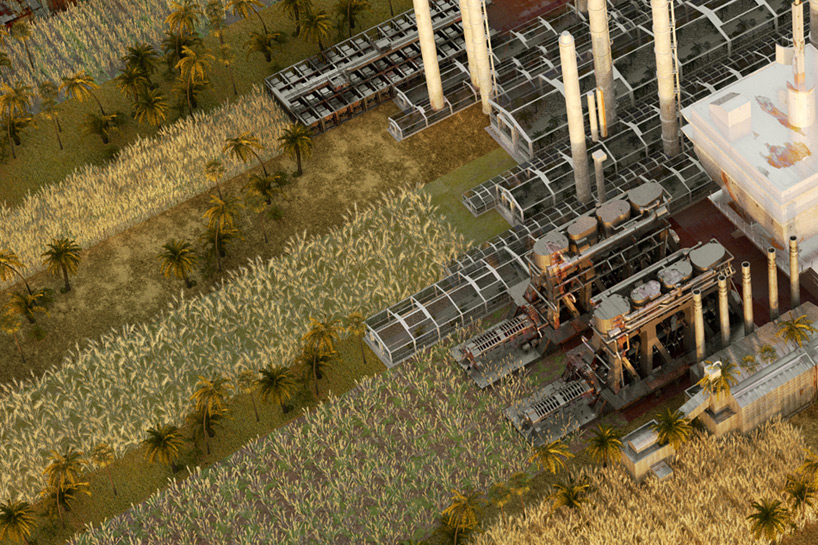
the versatile oasis takes advantage of the region’s hostile sun and wind through a series of inventive systems
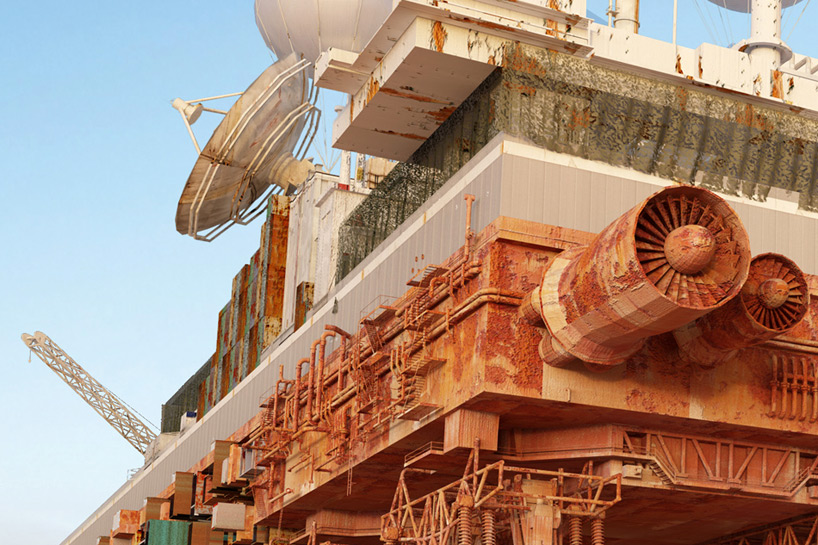
the structure generates its own electricity through nine solar towers
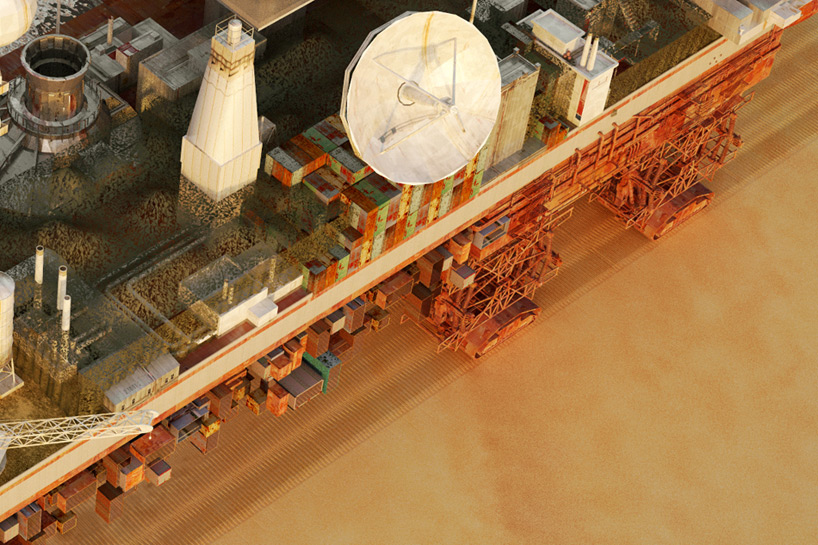
the structure’s sixteen caterpillars revitalize the barren ground
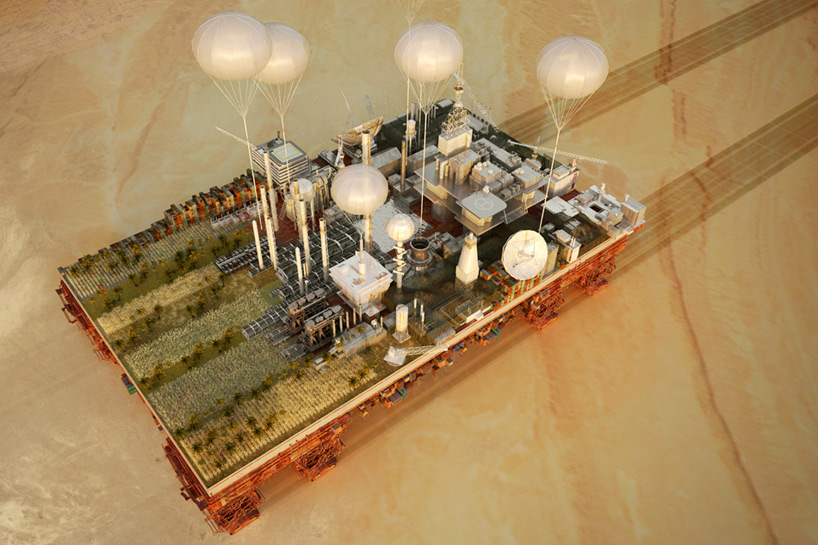
‘the green machine’ intends to stimulate debate concerning global warming, overpopulation and food shortage

